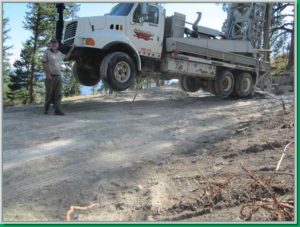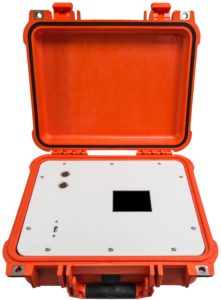Seismoelectric Success Montana
One of many seismoelectric successes (By Ervin Kraemer):
For those of you who are unfamiliar with Seismoelectrics, it is in a nutshell the study of the signals produced whenever water (or another resistive liquid) is forced to move by the pressure changes associated with a seismic shot. Seismoelectrics (aka: electro-kinetics, electro-seismics) have been periodically investigated since about 1936. The technology used in the following case study (success) was a result of the use of a system developed in the UK by two geophysicists more than 20 years ago. The system they designed has been used commercially for more than 20 years by operators from around the world many of whom were trained by Ervin Kraemer.
A project was completed near Flathead Lake, MT for an engineer from a major airline manufacturer (Jack V.). Jack had purchased a beautiful piece of property about 520 feet above the lake level and about 1 mile to the west of the lake. Prior to the exploration, research showed there was only one reported well in the immediate area due mainly to the newness of the development. That single well was located about 400 feet lower in elevation than the subject property which was near the highest parts of this development. The geology was vaguely listed as “mainly clay and broken rock to approximately 10 feet transitioning to mainly carbonate type rocks” (likely limestone). A local driller explained that his experience in the area showed the formation to be relatively brittle and somewhat soft often requiring casing to stabilize borehole. A small exploration survey was completed over the only area where drilling equipment could access and the initial GF6 seismoelectric graphs showed the obvious signature of an aquifer. Further processing would be needed to help determine the final max drill depth and minimum expected yield.
After the data was processed using the information available about the local geology, it was determined the maximum drill depth was about 575 feet (+/- 20%) with a minimum expected yield of 5 to 10 gallons per minute. Drilling was started on 13Aug2012 and one of the comments made by the driller to Jack was “it was one of the hardest holes he has drilled, as in hard rock” which was much different than he expected and would likely impact the initial interpretation of depth because the rock hardness directly impacts the one way seismic travel time used to calculate depth. The harder the rock formation the higher the seismic velocity. When the driller hadn’t encountered water at the initial estimated depth, Jack called to discuss the way forward and to provide me with the updates provided by the driller. After Jack told us that rock formation was much harder than anticipated, we made some velocity adjustments and re-accessed that maximum drill depth to be closer to 750 to 780 feet (+/- 20%). Jack called the next day and told us they hit water at 760 feet with an initial estimated yield of 20 gallons per minute.
There were a number of things that complicated the seismoelectric data collection process which included limited access for our vehicle, a significant amount of rock mixed into the native surface material, and non-virgin soil conditions at most of the test sites. In spite of these testing complications, we were able record the strong but deep aquifer at all of the sounding sites.
Below is a picture of the drilling company owner/operator with his drill rig in place.

3rd Generation GF6
